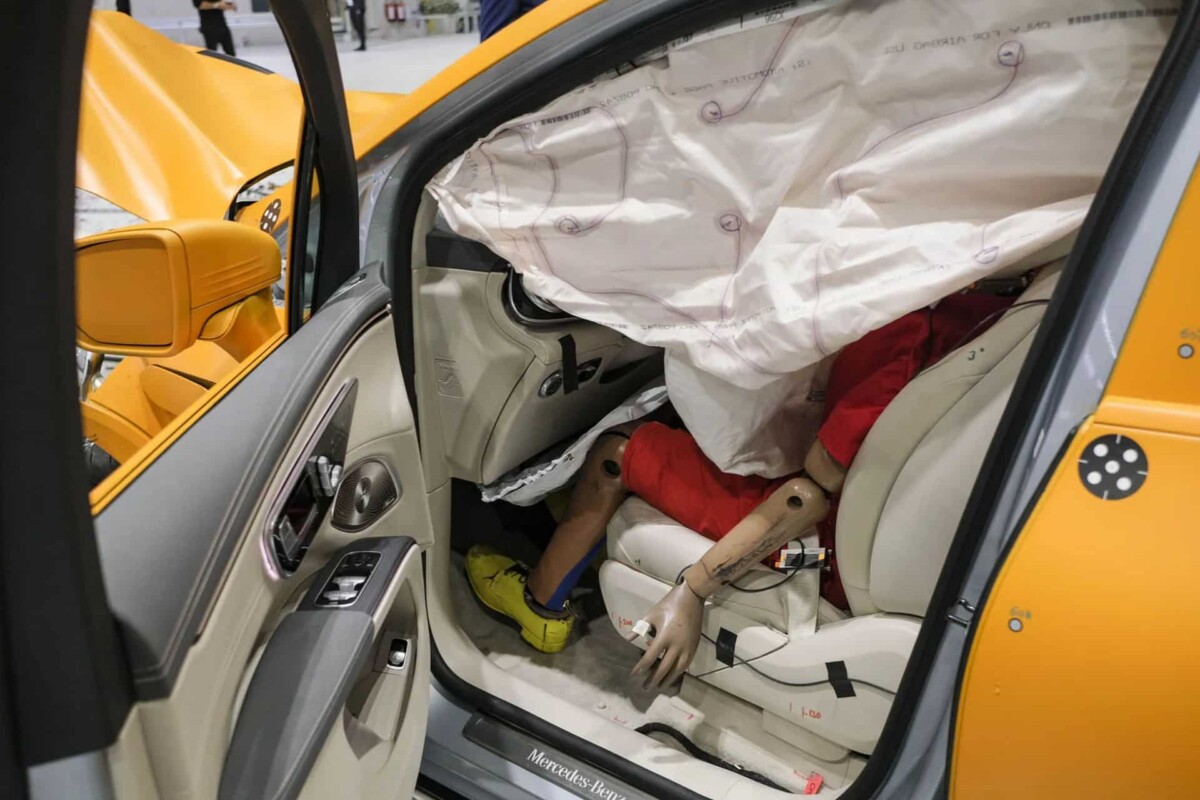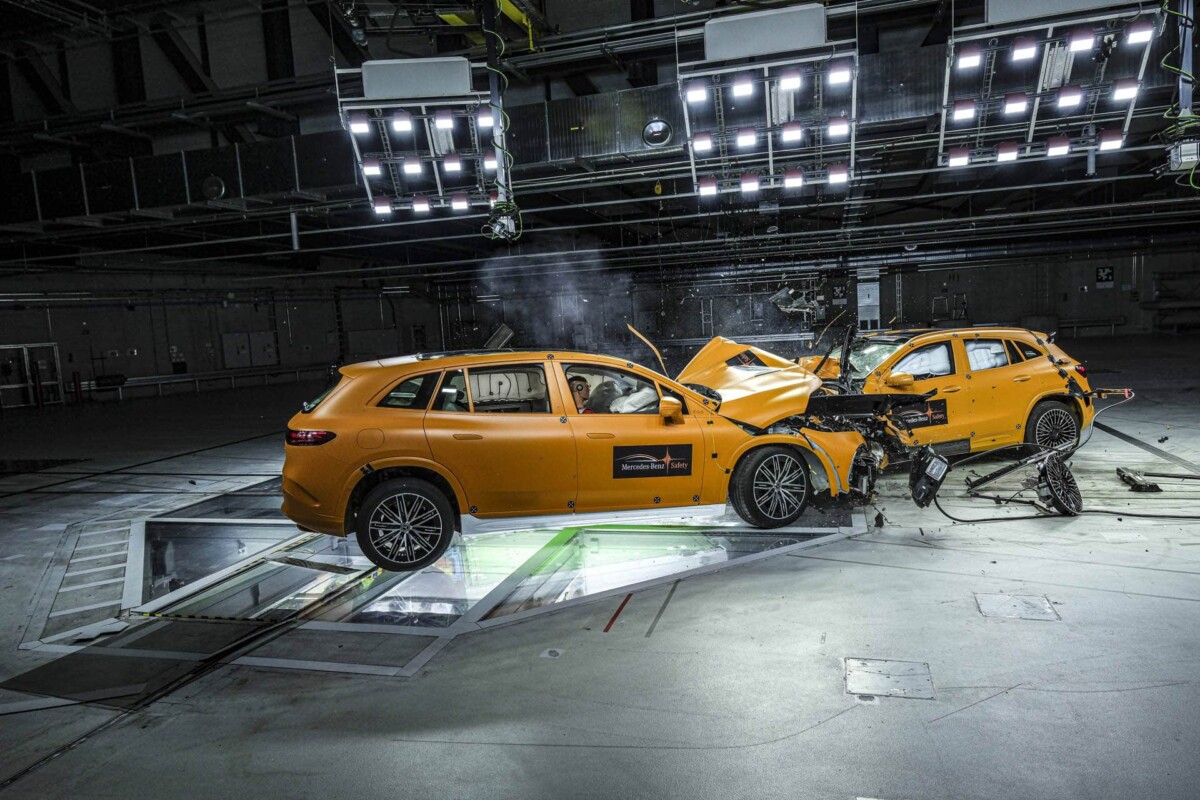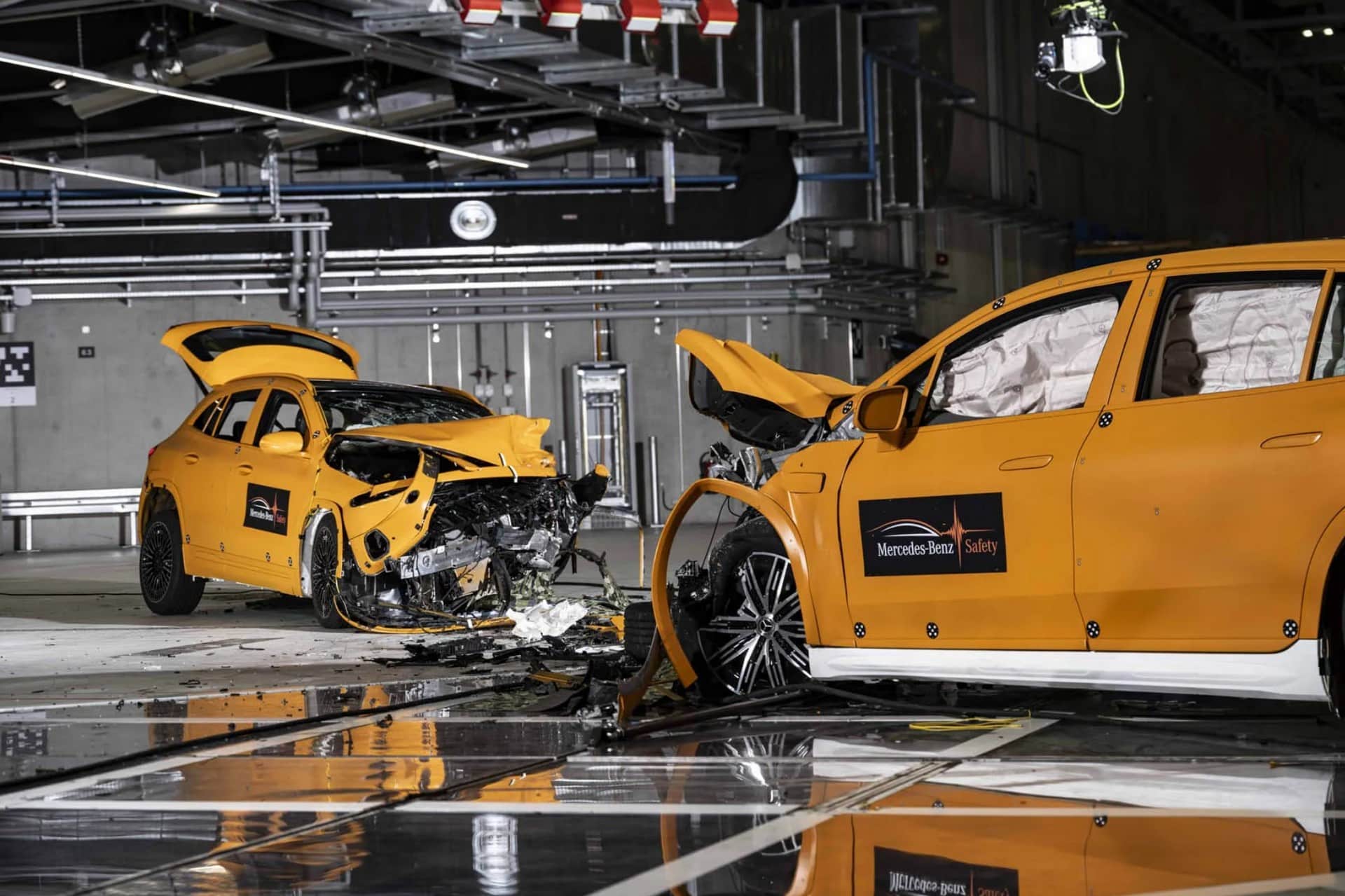It is a crash test which strangely is not part of the Euro NCAP protocol, but the collision between two electric cars will certainly be a test process to take into account with the multiplication of electric models on our roads. In the meantime, it is Mercedes who tried this exercise, and the results are rather reassuring.
If you read us regularly, you may not have missed our special report dedicated to Euro NCAP crash tests, the independent body responsible for testing the safety of our cars in Europe. Its testing protocol is constantly evolving, and today it takes into account many factors, and in particular driving aids. The absence of certain aids can result in a very poor rating, even if the car is not “dangerous” in itself.
The protocol will therefore evolve over a few more years to come as close as possible to the real conditions that motorists may encounter. But there is one element that is not necessarily taken into account: the collision between two electric cars.
New elements to take into account
What might be different from thermal models? Many things, starting with the presence of the batteries, in the majority of cases positioned under the floor of the car, the absence of a motor under the front hood in a good number of electric cars or even the weight, more important by compared to a thermal equivalence.
To remedy this, Mercedes did not want to limit itself to collisions against static obstacles. The star firm organized a frontal crash test between two of its electric models, the EQS SUV 450 and the EQA 300. This experiment was carried out at the group’s vehicle safety technology center in Sindelfingen, Germany, and is particularly interesting, because it allows us to understand the impact of the difference in size and weight between the two vehicles.

The two electric cars were subjected to a head-on collision at around 55 km/h, with a frontal overlap of 50%. The models on board the vehicles, weighing 49 kg and measuring around 1.50 meters, wore red t-shirts and white shoes. The results of this simulation are impressive, as evidenced by the crash test video below.
The occupants emerged relatively unscathed from the collision, generally demonstrating the robustness of the design of these electric vehicles in terms of safety. Generally speaking, we couldn’t expect anything else anyway since this video also aims to promote safety on board electric Mercedes.
Even though they are heavier, electric (and modern) cars are safer
Mercedes’ goal was to exceed legal safety requirements. Both models had already received five stars in Euro NCAP crash tests, but still needed to be evaluated by the National Highway Safety Administration (NHTSA) and the Insurance Institute for Highway Safety (IIHS) in the United States.
One of the notable differences between the EQS and the EQA is their weight. The EQS weighs almost three tonnes, while the EQA is lighter, weighing in at 2.2 tonnes. Mercedes engineers equipped the vehicles and dummies with 150 sensors each to collect precise data during the collision.

After the crash, it appeared that the risk of serious injury or death was low, confirming the results of preliminary computer simulations. Moreover, the high voltage system automatically disconnected, guaranteeing the safety of occupants after impact. The batteries of both vehicles remained intact.
Slow motion footage from the crash test shows that the EQA rebounded more sharply after the collision with the EQS SUV, the larger and heavier of the two. This test also highlighted the effectiveness of airbags and controlled crumple zones, which absorbed a large part of the energy of the impact, keeping the cabin virtually intact and thus protecting the occupants.
